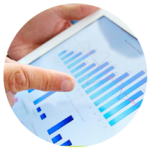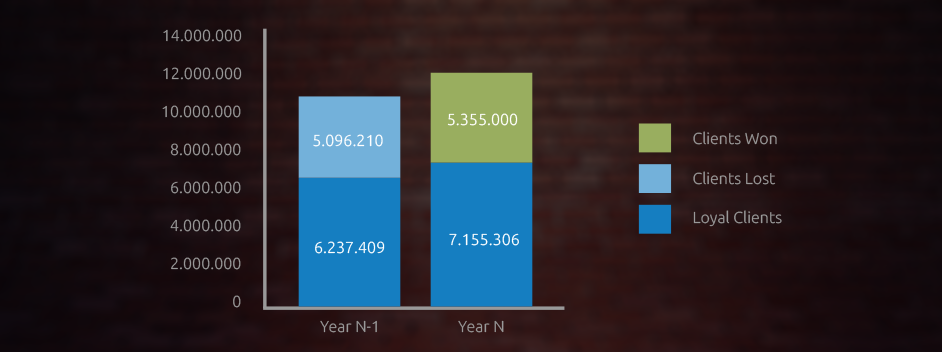QUANTIFY, QUALIFY, SCORE, SEGMENT, AND PREDICT WITH INTERNAL OR EXTERNAL DATA
- How to interpret the behaviour of your clients and prospects?
- What are the dynamics of your client base: return buyers or new clients?
- What new product offer should you prioritise in cross-sales?
- What are the most visited channels and the transition behaviour from one channel to another?
digital BRAND Consulting offers developing client knowledge by associating qualitative exploratory approaches with quantitative statistical studies of purchasing and behavioural data.

Understanding the customer’s journey.
Your expectations …
Understand the interaction between the client and the brand during an omni-channel journey. Quantify the influence of the journey on the purchasing timeframes, the purchase, the return purchase…
Length: from 2 to 8 weeks.
Typical stages:
- Data collection,
- Validation of data and descriptive analysis, return of first differentiating elements,
- Identification of typical client journeys and final return,
- Prototypes and models (for example, wireframe, mock-ups, graphic or functional models, call centre scripts, training programs, etc.),

Your customer base dynamics.
Your expectations …
- Understand the dynamic of the evolution of your client base:
- Out of 100 euros in sales variations, what percentage is made up of return purchases and of first purchases?
- What clients can be made more loyal? And how?
- What products and services are more attractive to a particular segment?
- Does my relational marketing plan work well for all my clients or just a small segment?
Length: from 2 to 8 weeks.
Typical stages:
- Segmentation of your client base based on the evolution of purchasing behaviour between two periods,
- Explanation of the evolution,
- Strengths and weaknesses of your client base, probable evolutions, opportunities for elaborating your marketing plan.
The evolution of sales to “loyal” clients between years N-1 and N explains close to 78% of global sales. Here, the loyalty mechanism is in effect the motor for growth.

Segmentation of customers or a contact database.
Your expectations …
“Clustering” a client base or contact database in response to a short or long term issue: launch of a new offer, personalisation of communications, optimisation of investments dedicated to different sales and contact channels, targeting a campaign…
Length: from one week to three months.
Typical stages:
- Validation of study objectives,
- Identification and gathering of necessary data,
- Validation and eventual correction of data,
- First return on segmentation,
- Deepening of segmentation and final return,
- Program delivery in view of industrialisation.

Predictive scoring.
Your expectations …
Predict, via algorithms, the probabilities of purchases of a product or service.
Increase the performance of marketing campaigns, improve client experience, conversion rates and the amount in the client’s basket.
Length: from 10 days to several months.
Typical stages:
- Identify and gather necessary data,
- Validation and eventual correction of data,
- Selection of variables that are candidates for scoring, first return of differentiating variables during the act of purchasing,
- Modeling and return of the scoring performance,
- Program delivery allowing for its industrialisation.

Client satisfaction.
Your expectations …
Identify and measure the explanatory factors of the perception of the quality of service, satisfaction, the frequency of purchases and an overall positive client experience.
Length: from 2 to 5 weeks.
Methodology.
Qualitative study in group meetings, interviews with individuals and/or quantitative study.





